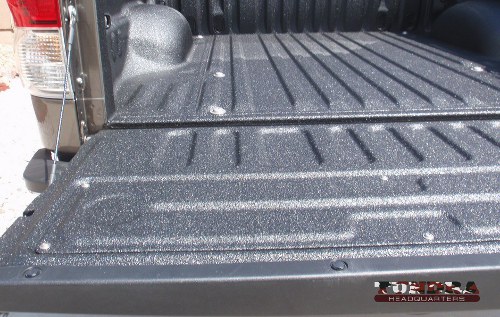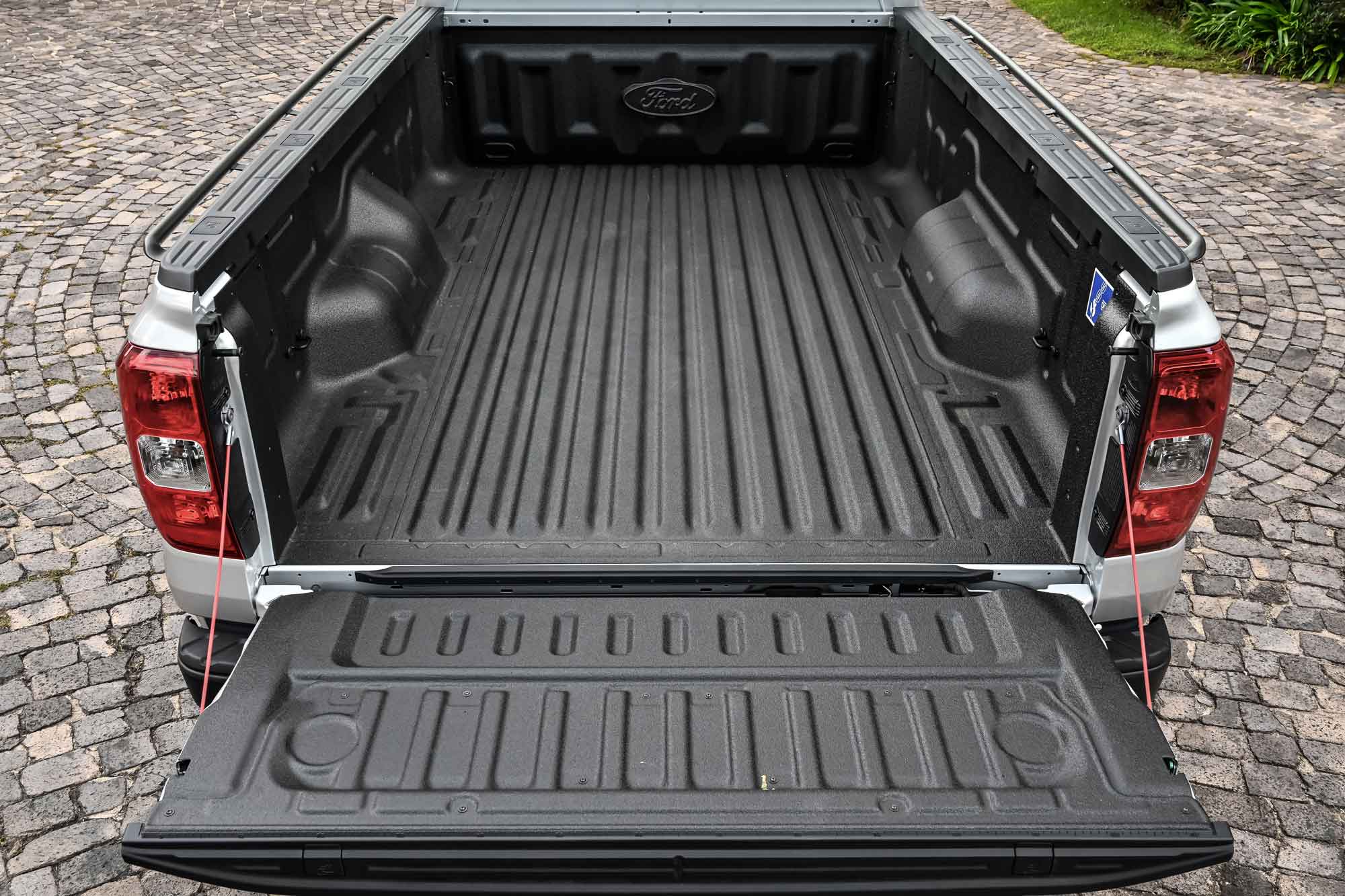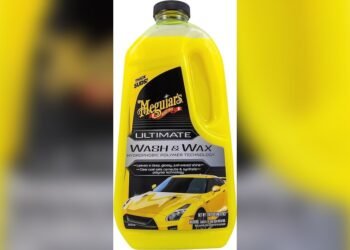When it comes to protecting your truck bed, you want a liner that stands up to tough conditions and keeps your vehicle looking great. You’ve probably come across Raptor Liner and Rhino Liner—two of the most popular options out there.
But which one is really the best fit for your needs? Whether you’re after durability, ease of application, or long-lasting protection, understanding the key differences between these liners can save you time, money, and frustration. You’ll discover what sets Raptor Liner and Rhino Liner apart so you can make the smartest choice for your truck and your lifestyle.
Ready to find out which liner will give your truck the ultimate shield? Keep reading!
Raptor Liner Features
Raptor Liner offers a robust protective coating for trucks and other surfaces. It combines strength with ease of use, making it a popular choice. Understanding its features helps in comparing it with other liners like Rhino Liner.
Material Composition
Raptor Liner is made from a polyurethane-based formula. This material creates a thick, textured surface. It bonds well to metal, wood, and plastic. The composition resists chemicals and UV damage.
Application Methods
You can apply Raptor Liner by spray or roll-on. Spray application ensures even coverage and a professional finish. Roll-on kits allow simple DIY use with less equipment. Both methods dry quickly, usually within a few hours.
Durability And Flexibility
Raptor Liner is tough and flexible at the same time. It withstands impacts without cracking or peeling. Its flexibility helps it resist damage from vibrations and heavy loads. The liner maintains its integrity in hot and cold climates.
Resistance To Scratches And Rust
The liner’s texture protects against scratches from tools and debris. It also seals the surface, preventing moisture from causing rust. This resistance extends the life of the coated area. Raptor Liner keeps surfaces looking good for years.
Rhino Liner Features
Rhino Liner offers a range of features that make it a reliable choice for truck bed protection. It is known for strong materials and professional application methods. The liner provides excellent resistance to wear and damage. Rhino Liner also has several popular formulas designed for different needs.
Its features focus on durability, ease of use, and long-lasting protection. Understanding these features helps you decide if Rhino Liner fits your requirements.
Material Types
Rhino Liner uses polyurethane and polyurea materials. Polyurethane offers flexibility and good adhesion. Polyurea cures faster and has better chemical resistance. Some Rhino formulas blend these materials for balanced performance. This variety allows users to select the best liner for their surface and use.
Professional Application
Rhino Liners are often applied by trained professionals. The process includes surface cleaning and preparation for strong bonding. Spray equipment ensures even coating and proper thickness. This professional approach improves durability and finish quality. DIY options exist but may not match professional results.
Abrasion And Impact Resistance
Rhino Liner protects surfaces from scratches and dents. Its tough coating absorbs impacts from heavy loads and rough use. The liner resists abrasion, keeping the surface smooth and intact. This makes it ideal for trucks, trailers, and industrial equipment. The resistance extends the life of the underlying material.
Popular Rhino Formulas
Rhino offers several well-known formulas. SolarMax is UV resistant and ideal for outdoor use. Extreme provides high durability for heavy-duty applications. HardLine offers a thicker coat for maximum protection. Each formula targets specific needs, allowing users to choose the best fit.
Durability Comparison
Durability is a key factor in choosing between Raptor Liner and Rhino Liner. Both products protect truck beds and surfaces from damage. Understanding their durability helps in making the right choice for your needs.
Hardness Levels
Raptor Liner offers a hardness rating around 70-80 on the Shore D scale. Rhino Liner’s hardness typically ranges from 60 to 75 Shore D. Higher hardness means better resistance to scratches and dents. Raptor Liner tends to be slightly harder, providing a tougher surface. Both coatings maintain good hardness after curing.
Impact And Abrasion Resistance
Raptor Liner absorbs impacts well and resists abrasion from heavy use. Rhino Liner also performs strongly against impacts and wear. Both liners protect against chipping and peeling during normal use. Raptor’s thicker texture helps cushion impacts better. Rhino offers consistent abrasion resistance, ideal for rough conditions. Each liner extends the life of truck beds by preventing surface damage.
Weather And Climate Performance
Raptor Liner handles extreme heat and cold without cracking. Rhino Liner resists UV rays and moisture effectively. Both liners prevent rust by sealing the metal underneath. Raptor’s flexibility aids in withstanding temperature changes. Rhino’s formulations include UV blockers to reduce fading. Both products work well in Austin, Texas’ hot and humid climate.

Credit: tundraheadquarters.com
Application Process
The application process plays a key role in choosing between Raptor Liner and Rhino Liner. It affects how easy or complex the coating job will be. Understanding the steps helps you decide the best fit for your needs. Both liners have unique methods that influence the final look and durability.
Diy Vs Professional Installation
Raptor Liner offers a user-friendly DIY kit. It includes everything needed for small projects. Many users apply it themselves with basic tools and patience. Rhino Liner usually requires professional installation. Experts use specialized spray equipment for an even coat. Professional application ensures better adhesion and finish. DIY might save money but risks uneven coverage.
Spray-on Vs Roll-on Options
Raptor Liner provides both spray-on and roll-on application methods. Spray-on delivers a smooth and uniform texture. Roll-on is simpler but may leave brush marks. Rhino Liner primarily uses spray-on application only. The spray method creates a tough, consistent layer. Spray-on generally offers better protection and appearance. Roll-on suits smaller areas or touch-ups.
Curing Time And Conditions
Both liners require proper curing to harden fully. Raptor Liner usually cures in 24 to 48 hours at room temperature. Rhino Liner may take slightly longer depending on the formula. Ideal curing happens in warm, dry conditions. Moisture and cold temperatures slow the process. Avoid heavy use before the liner fully cures. Proper curing boosts durability and impact resistance.
Cost And Value
Choosing between Raptor Liner and Rhino Liner involves understanding their cost and overall value. Price is just one factor. The lasting benefits and warranty also matter. This section breaks down these points to help make a smart choice.
Price Differences
Raptor Liner usually costs less upfront than Rhino Liner. This makes it a popular pick for budget-conscious buyers. Rhino Liner’s price is higher because of its professional application and durable materials. Both offer different pricing depending on the truck size and liner type.
Long-term Investment
Raptor Liner provides good protection and can be applied by DIY users. It saves money on labor costs. Rhino Liner, however, offers a tougher finish that lasts longer under harsh conditions. Over time, Rhino can reduce the need for repairs or reapplications. This makes Rhino a better long-term investment despite the higher initial cost.
Warranty And Longevity
Rhino Liner comes with a strong warranty that covers fading, cracking, and peeling. This warranty adds value and peace of mind. Raptor Liner’s warranty is usually shorter and less comprehensive. Both products resist wear, but Rhino’s proven durability supports its longer warranty and lifespan.
User Experience
User experience plays a key role in choosing between Raptor Liner and Rhino Liner. Both products offer strong protection for truck beds and surfaces. Understanding how easy they are to use, maintain, and troubleshoot helps users decide which fits their needs best.
Ease Of Use
Raptor Liner is known for its DIY-friendly application. It can be sprayed or rolled on with basic tools. This makes it popular among first-time users and hobbyists. Rhino Liner usually requires professional installation. It involves specialized spray equipment and expertise. For users wanting a quick and simple project, Raptor offers more flexibility.
Maintenance Requirements
Both liners need minimal upkeep once applied. Raptor Liner cures to a tough, textured surface that resists scratches and stains. Cleaning requires just mild soap and water. Rhino Liner also resists wear and fading. It may need occasional touch-ups if exposed to heavy damage. Neither product demands frequent or complex maintenance.
Common Issues And Solutions
Raptor Liner users sometimes face bubbling or peeling if the surface is not cleaned well before application. Proper surface prep and drying time prevent these problems. Rhino Liner can crack under extreme impact but rarely peels. Small cracks can be repaired with matching spray kits. Both brands provide clear instructions and support to fix common issues effectively.
Other Bedliner Alternatives
Besides Raptor Liner and Rhino Liner, several other bedliner alternatives offer unique benefits. These options vary in price, durability, and ease of application. Choosing the right one depends on your needs and budget. Here are some popular alternatives to consider.
Line-x Overview
LINE-X is a well-known spray-on bedliner brand. It offers excellent durability and strong protection. LINE-X resists abrasions and chemicals effectively. Its tough finish lasts for years without cracking or peeling. Professionals often recommend LINE-X for heavy-duty use. The application requires special equipment and trained installers.
Speedliner Highlights
Speedliner provides a durable spray-on liner with a textured finish. It offers good resistance to impacts and UV damage. Speedliner cures quickly, allowing faster truck use. It is available in many colors to suit different styles. This bedliner appeals to those wanting strong protection at a lower cost. Installation can be done by professionals or experienced DIYers.
Budget-friendly Options
For tight budgets, roll-on and spray-on kits from brands like Herculiner provide basic protection. These liners are simple to apply with a brush or roller. They help prevent rust and minor scratches. While not as tough as professional sprays, they improve truck bed longevity. Many users choose these options for light-duty and cost savings.
Credit: www.tacomaworld.com
Choosing The Right Bedliner
Picking the right bedliner depends on many factors. Your truck’s use, climate, and installation skills matter. Both Raptor Liner and Rhino Liner offer strong protection. Understanding your needs helps you choose the best fit.
Each liner has unique features. Knowing these helps protect your truck bed better. Read on to see which one suits your situation.
Usage And Protection Needs
Think about how you use your truck. Heavy hauling needs tough protection. Rhino Liner often suits heavy-duty jobs well. Raptor Liner is great for moderate use and DIY projects. Both liners resist scratches and dents. Choose based on the damage your truck faces most.
Climate Considerations
Weather affects liner performance. Hot climates need liners that resist fading and cracking. Rhino Liner holds up well under sun and heat. Raptor Liner also resists UV damage but may need more care. Cold climates require liners that stay flexible. Both liners perform well in cold but check local reviews for specifics.
Diy Enthusiast Vs Professional
Raptor Liner suits DIY users with easy spray or roll options. It allows control over the application process. Rhino Liner usually requires professional installation. It offers expert finish and durability. Choose Raptor if you want to save money and enjoy hands-on work. Choose Rhino if you want a guaranteed professional result.

Credit: www.capitalone.com
Frequently Asked Questions
What Is The Toughest Bedliner?
Speedliner is considered the toughest spray-on bedliner, offering superior strength and durability. LINE-X and Rhino Linings also provide top professional-grade protection. Raptor Liner is a strong, flexible DIY option with excellent scratch and impact resistance.
What Happens If A Raptor Liner Gets Wet?
A wet Raptor liner remains durable and flexible. It resists water damage, preventing peeling or cracking. Dry it thoroughly for best performance.
Which Spray In Bedliner Is Best?
The best spray-in bedliners are LINE-X and Rhino Linings for durability. Raptor Liner suits DIY use, while Speedliner offers strong budget protection.
What Is The Average Cost Of A Rhino Liner?
The average cost of a Rhino liner ranges from $400 to $1,200. Professional installation may increase the price.
What Are The Main Differences Between Raptor Liner And Rhino Liner?
Raptor Liner is DIY-friendly with spray or roll options. Rhino Liner is mainly professionally applied for heavy-duty use.
Conclusion
Choosing between Raptor Liner and Rhino Liner depends on your needs. Both offer strong protection for truck beds. Raptor Liner suits DIY users who want flexibility and ease. Rhino Liner appeals to those seeking professional-grade, long-lasting durability. Consider your budget, application method, and desired finish.
Either choice will help protect your truck from scratches and rust. Think about what matters most to you. Protect your investment wisely with the right bed liner.

















